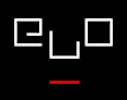Your cart is currently empty!
Showcase
-
Cruising
This short piece offers a simple but very effective interface. “Cruising” is a compelling example of the Flash-based work that has been presented over the past several years at Ankerson… Read more.
·
-
Aisle
This curious interactive fiction “Aisle” provides the player with only one turn in which to do something, offering the slimmest possible bit of choice. But by playing repeatedly, a set… Read more.
·
-
The Dazzle as Question
“The Dazzle as Question,” first published in frAme, traces the conflict between the left and right brain inclinations of an erstwhile “old school” artist as experienced via an encounter with… Read more.
·
-
Viewing Axolotls
Regina Celia Pinto, a Brazilian artist and writer, is the creator of The Library of Marvels. This online library is a collection of “artist’s e.books” on the web. The library… Read more.
·
-
Diagrams Series 6
In Jim Rosenberg’s diagram poems a graphical notation acts as an external syntax — thereby, as Rosenberg puts it, “allowing word objects to carry interactivity deep inside the sentence.” This… Read more.
·
-
Text Rain
Text Rain is an interactive installation in which viewers play with the falling text of a poem. The text responds to motion and can be caught, lifted and released to… Read more.
·
-
Moving Toward the Light
Christy Sheffield Sanford’s “Moving Toward the Light: A Meditation for the Solstice” is one of the remarkable pieces created by this unusual artist and poet. Known for her use of… Read more.
·
-
Beautiful Portrait
“Beautiful Portrait” is featured in a recent issue of Born Magazine. In keeping with the mission of the magazine to combine designers and writers, the poem itself is written by… Read more.
·
-
Fibonacci’s Daughter
“Fibonacci’s Daughter” by M.D. Coverley (a pen name for Marjorie C. Luesebrink), published originally in New River in 2000, is a narrative and architectural puzzle. The main character, Annabelle Thompson,… Read more.
·
-
Micro-Talespin
James Meehan’s Tale-Spin, created as part of his 1976 dissertation, The Metanovel: Writing Stories by Computer, was the first major project in the area of story generation. Like one of… Read more.
·
